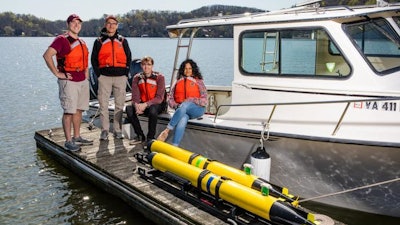
It’s been said that we know more about the surface of the moon than the floor of Earth’s oceans. For more than two decades, Virginia Tech’s Center for Marine Autonomy and Robotics has been developing robots that can find what lies beneath the sea surface with the support of the Office of Naval Research.
Bringing together faculty and students from the College of Engineering and the Virginia Tech National Security Institute, the center is developing advanced underwater robots and autonomy algorithms that enable them to operate intelligently without human oversight. The research team recently was awarded two grants totaling more than $5 million to continue that mission. Two additional grant proposals, totaling about $2.4 million, have been selected by the agency and awards are in process.
“Our positive, growing relationship with the Navy is a direct result of our ability to be responsive to the Navy’s needs, including technology development and training of the next generation of Navy science and technology leaders,” said Dan Stilwell, electrical and computer engineering professor. “Our students and staff are designing and deploying the next generation of autonomous underwater robots with capabilities that are far beyond those of current Navy systems.”
Stilwell, who co-directs the center alongside aerospace and ocean engineering Professor Stefano Brizzolara, noted the strong and long-standing support for center’s work from across the Navy’s science and technology enterprise, including various Navy labs and commercial organizations, in addition to the Office of Naval Research.
The projects and their applications
Advancing Unconventional Marine Platforms, $2.4 million, Office of Naval Research
This project aims to develop vehicle systems that utilize hydrofoils, or what can be thought of as “underwater wings.” These underwater wings enable a surface vehicle to travel at high speed while using much less energy than a conventional boat. The center is developing several types of unconventional vehicles that use hydrofoils. One type could be ridden by human scuba divers while traveling at high-speed on the surface of the water. The same vehicle would transform itself into a more conventional diver propulsion vehicle and tow a diver while underwater. Another example is a small surface vehicle that is fully autonomous. A specific innovation sought by the Navy for this vehicle is the ability to operate in breaking waves at the surf-zone.





















